THE WELSH PIBGORN |
||||
|
||||||||||||||||||||||||||||||||||||||||||||||||||||||||||||||||||
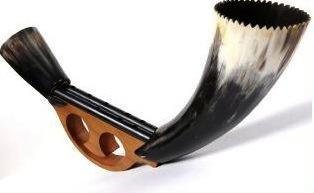 |
||
Basque Alboka Baines in his "Woodwind Instruments and their History", speculates that the horn on the bottom end of the pipe was most likely a copy from its use on primitive cane and wooden trumpets and cites a number of "hornpipes" all over the world with horn only on the bottom end. The Moroccan Mizmar for example uses two horns on the bottom but a double reed on top and no wind cap. Marcuse in her "A Survey of Musical Instruments" agrees with both and further points out that the Welsh pipe could be made from bone or wood, and was still being played by shepherds on Anglesey (Mon) as late as 1870. Its Scottish counterpart , played in southern Scotland is now extinct and was rare in 1794 when Robert Burns tried to obtain an example. Only 2 specimens of the Scottish variety have been preserved. Burns wrote: "I have at last gotten one. It is composed of 3 parts, the stock, which is the hinder thigh-bone of a sheep..the horn, which is a common highland cows horn..and lastly the oaten reed exactly cut and notched like that which you see every shepherd boy have when the corn-stems are green and full grown. The stock has 6 or 7 ventiges on the upper side and one back ventage...." For an interesting article on the Scottish version of the pibgorn check out: "THE STOCK-AND-HORN" by Lyndesay G. Langwill, click Langwell |
||
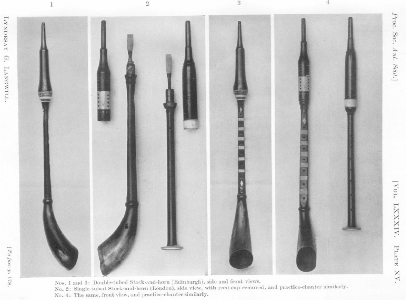 |
||
Examples of Stock and Horn from Langwill's article. Instrument clearly has a double reed instead of the pibgorn's single reed. Music scholars have found that in some Russian and Albanian hornpipes the reeds are taken directly in the mouth, as they were in older Scottish forms of the instrument. Moch Pryderi uses pibgyrn by John Tose, Jonathan Shorland and Gafn Morgan of Wales, and Alan Keith of California. |
||
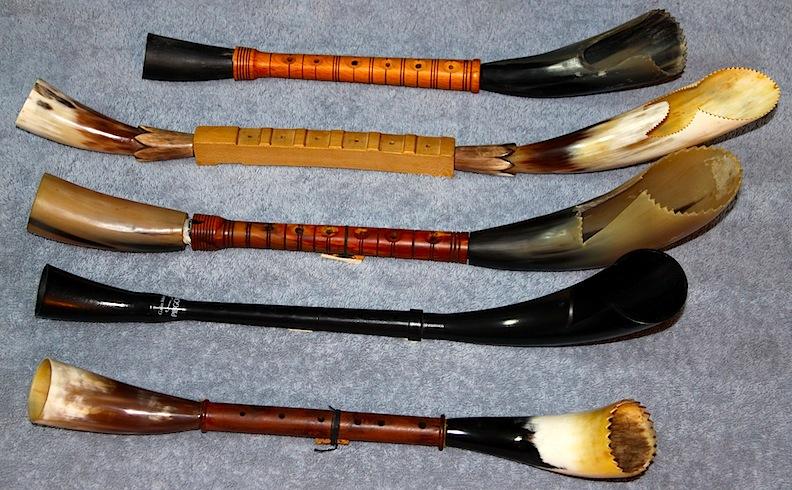 |
||
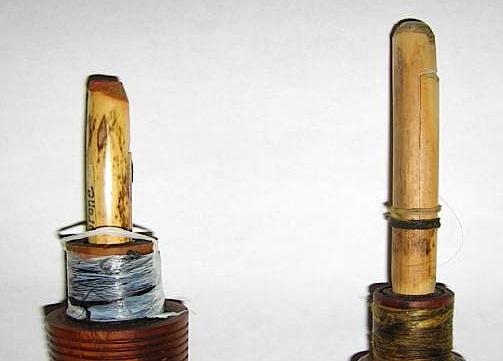 |
||
Close-up of Pibgorn reeds without the cover. |
||
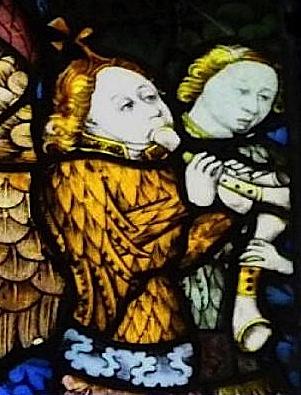 |
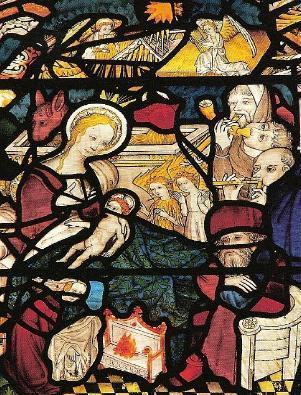 |
|||
On the left are details from the Beauchamps Window at St. Mary's with 2 Pibgorn players c. 1447. On the right details from the mid 15th c. rose window section "Adoration of the Shepherds" at St. Peter Mancroft in Norwick with a Pibgorn player. |
||
For more information on Pibgyrn: Info on pibgorns, pibgorn making, reed making and great close-up pictures of the St. Fagan's Pibgyrn check out : "A Pratical guide to making pibgyrn" by Gerard KilBride Check out Jem Hammond's YouTube demos on Pibgorn reed making. To read the 1891 Henry Balfour article PLAY SOME TUNES! John Tose's 200 Welsh Tunes for Pibgorn in abc To find a specific tune check the index |
||

